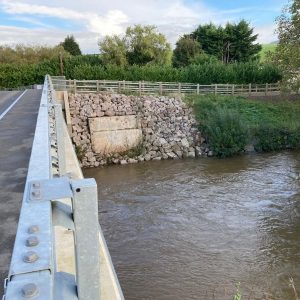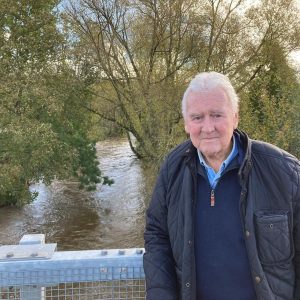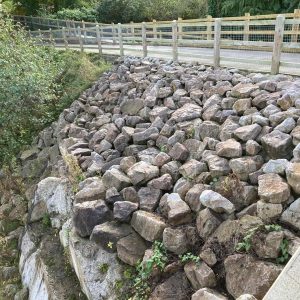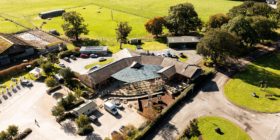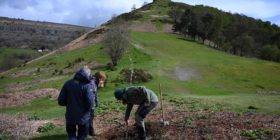Flooding “is still very much a concern to all residents, not just to those in Roe Park but in St Asaph”
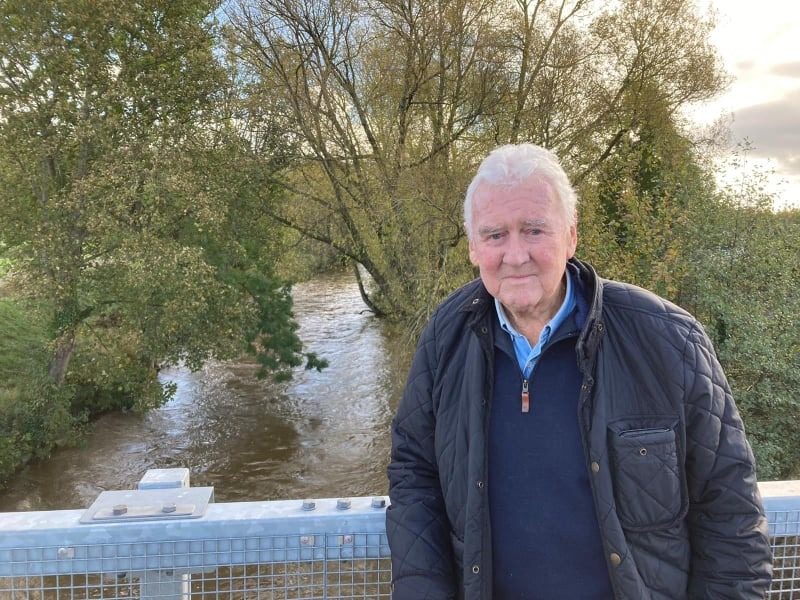
A retired couple whose home was wrecked by flooding live in fear and say more needs to be done to protect residents from a fast-moving, fast-rising river.
Colin Marriott, 80, has lived at Roe Park in St Asaph for 50 years with his wife Carol, but the couple’s home was ruined when the River Elwy burst its banks nine years ago.
The couple were on holiday in Dubai on 27 November 2012 and watched the scenes on Sky News when the river overtopped, flooding 320 properties and around 70 caravans.
The A55 was also flooded with water spilling into Spring Gardens – as well as 54 properties in the Roe Park area, yards from the river’s banks. The flooding was made worse when the river reached a nearby sewage treatment works, spreading human waste and causing a health hazard.
“It was devastating,” said Colin.
“The house stank. There was still water under the stairs. The garage was full of water. We lost photographs, clothing, golf clubs, pictures. There was no chance of replacing everything, and the other thing for me was I lost music recordings I’d had.
“The insurance paid, but some people weren’t insured.”
The damage to the property amounted to £110,000, forcing the couple to rent in Bodelwyddan.
Working closely with Denbighshire County Council, Natural Resources Wales (NRW) have since heightened the Spring Gardens Bridge and its banks, bolstering defences with sturdy rocks. A brick wall has also been built on the Roe Park side of the path, to protect the gardens beyond. The work was completed in 2018.
Then, on 9 February 2020, the river again burst when Storm Ciara hit. Despite the bridge and strengthened banks, Colin said the river still overtopped where the banks are lower, claiming only residents’ sandbags stopped Roe Park flooding again.
Last month Denbighshire County Council met to discuss a 185-page report on the flood of 2020. Natural Resources Wales’ Keith Ivens told councillors Storm Ciara was a one-in-200-year occurrence, insisting the flood defences were good but had failed partly due to an extreme event.
But with such extreme weather rising with climate change, Colin said more needs to be done to prevent it happening again.
“Unfortunately, the river levels rose higher than perhaps they predicted (during Storm Ciara in February 2020). So the residents had to find their own sandbags to block it off and prevent any further flooding. The river was overtopping and pouring into people’s gardens,” said Colin.
“It was absolutely terrifying. The water was scary. It was a very, very, very fast flowing river.
“Denbighshire County Council have adopted a hands-off approach with the main contractors Natural Resources Wales who have been allowed to proceed, as far as I can see, without any control whatsoever, and the fact they are now saying they have not failed us in Roe Park is a mystery. There is no doubt that if those sandbags had not been placed by the residents of Roe Park, we would have been flooded and out of our homes yet again.”
He added: “NRW need to address the situation with a degree of urgency so that we can have some form of relaxation before the flood weather comes in later this year.
“After NRW completed the flood programme in 2018, I never ever thought water would get to a level where I was concerned yet again, but in 2020 the river actually rose to within eight inches of this new bridge, the biggest defence we have got. So it is still very much a concern to all residents, not just to those in Roe Park but in St Asaph.”
Operations manager for Natural Resources Wales Keith Ivens said the 2020 storm was the result of extreme weather.
“The February 2020 storms brought extreme weather with high winds and torrential rain resulting in the wettest February in the UK on record and caused significant flooding across Wales,” he said.
“During Storm Ciara, the Elwy catchment saw the highest river levels since records began in 1974. Despite recording water levels higher than in 2012, we did not see the extent of flooding to properties as we saw then.
“Considering these extreme levels, our flood risk management scheme at St Asaph, completed in 2018, performed well and protected the vast majority of homes and businesses it was designed to protect.
“Having said that, this was a devastating event and a number of residential properties, commercial premises and caravan parks did unfortunately flood, although many of these were outside the defended area for the St Asaph scheme.
“Climate experts tell us that we can expect extreme weather events like those experienced in 2020 to become more common.
“Investing in and maintaining hard defences will always be at the heart of Wales’ approach to managing flood risk. But while defences reduce the risk of flooding for thousands of homes across the country, they cannot protect everyone all the time.
“We will continue to work with our professional partners, other risk management authorities as well as local communities in order to better understand and manage future flood risk for communities in this area.”
By Richard Evans – Local Democracy Reporter
Spotted something? Got a story? Send a Facebook Message | A direct message on Twitter | Email news@north.wales

